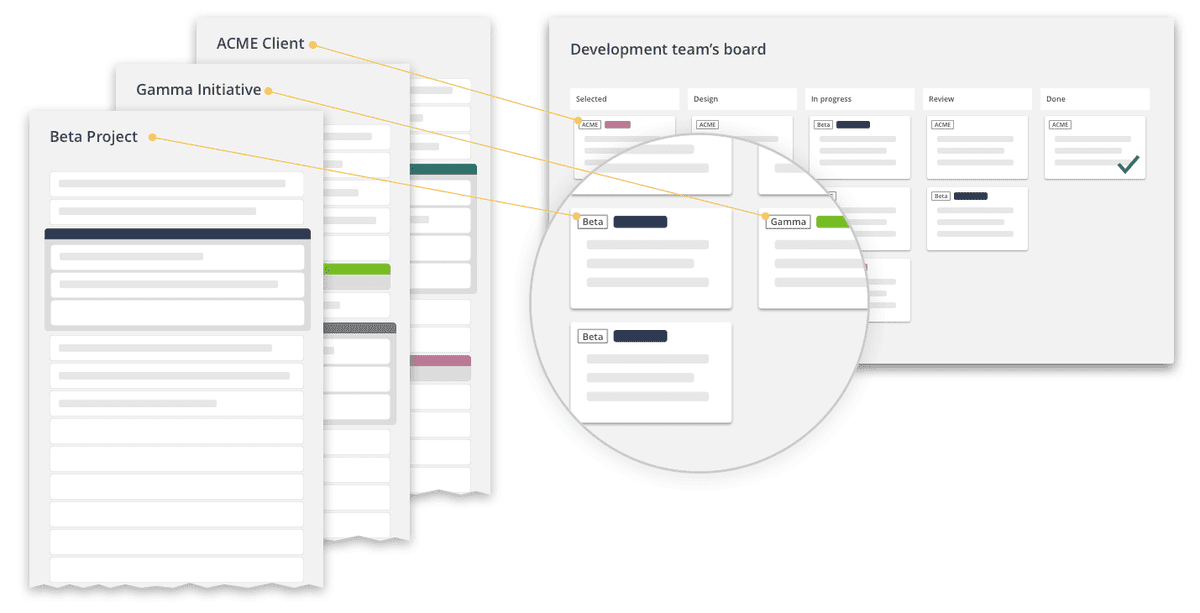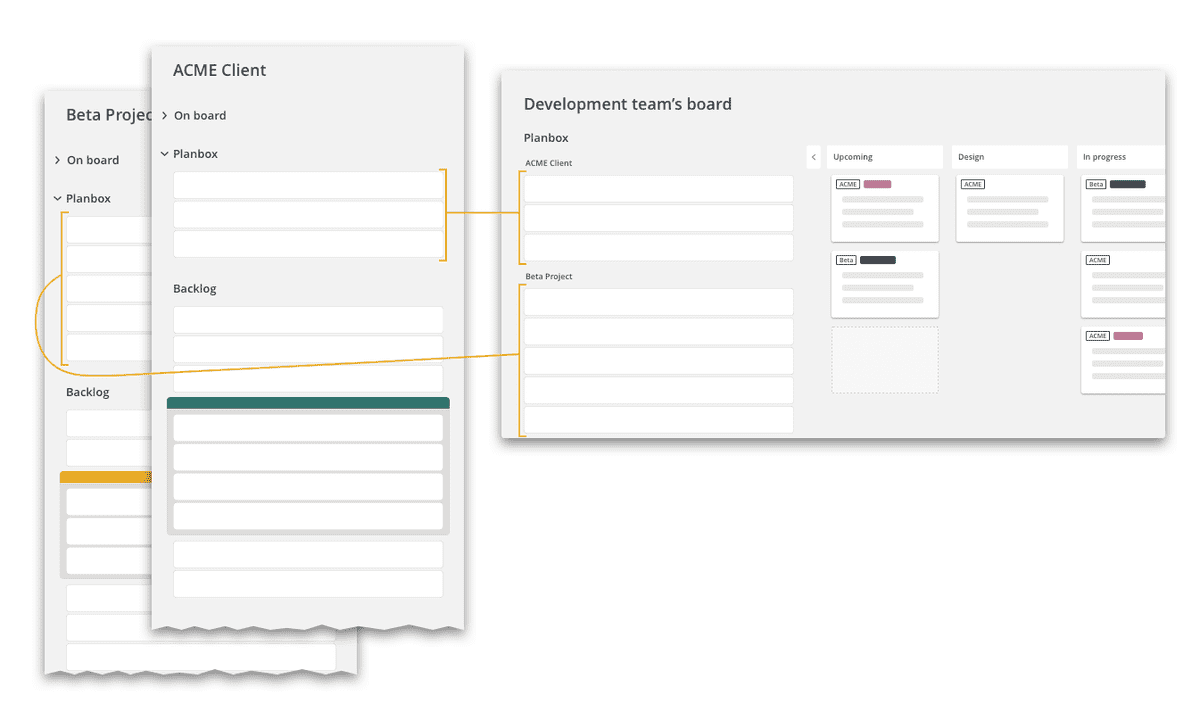The Scrum Mate Model
Our goal in Scrum Mate is to provide a great tool both for product teams and teams working on multiple projects.
We aim for our tool to benefit solution providers that manage and work for many clients, as well as agile business teams working on a variety of initiatives.
The Scrum Mate model is based on two cornerstones: projects and teams.
Projects are the goals and initiatives that are important to the organization. A project is broken down into actionable work items called stories. These stories are collected in the project's backlog ready to be accomplished by Teams.
In Scrum Mate, we define Teams as self-organizing groups within the organization who can work on one or more projects. To help them achieve that, they have their own board where they can organize their work.
A backlog represents the work that needs to get done
The backlog is the main workspace of a project and it provides a unified view of all stories that are yet to be delivered. As you will see, the backlog in Scrum Mate is divided into three sections.
At the top of the backlog, you will find a section called 'On board', which contains every story of the project that is on a team's board. The 'On board' section shows stories in completion readiness order: the most progressed story will be at the top of the list.

Then, you will encounter the 'Backlog' section which contains everything that needs to get done in the future. You will also find the 'Planbox' section that serves as a bridge between the team's board and the backlog section. The Planbox is a unique and essential tool to enable agile teams to work on multiple projects. We'll go more in depth about it a bit later in this post.
Since the backlog provides a comprehensive view of a project, you can use it as a single source of truth towards your clients. Your clients can get an overview of the progress of the stories of their projects to ensure transparency if you invite them to collaboratively manage the backlog.
Teams work on their own board
A board is a workspace that helps the team to visualize and organize all work they're completing. Every team has its own board that is set up by them to represent their workflow. Since a team can work on multiple projects, their board can hold story cards from many projects.

Note that the board can contain stories from many projects, and you may not want to invite your clients to a team's board. The board is for the development team only.
Agile for multiple projects
Agile - and especially Scrum - evolved in the product development environment where teams worked on a single product. The challenge when a team works on multiple projects is to avoid the chaos caused by conflicting interests of different projects that result in vague priorities and the loss of focus.
To sort that out, Scrum Mate uses a unique tool, called planbox. The planbox section in Scrum Mate provides a mechanism that helps product owners and agile teams to implement a clear method for prioritizing and selecting work that needs to be completed.
Project stakeholders who manage the backlog can put the stories they want the team to implement next into the planbox section. (Organizations should agree on the maximum number of stories allowed in the planbox.)

Teams can access the planbox section of all connected projects in a unified view, and they can pull stories from the planbox to their boards. This tool allows teams to implement a pull-system instead of having business stakeholders to push work directly to the team's board. This is to avoid weak prioritization and heavy overload of the team that could happen when decisions of the workload are made by business stakeholders.
